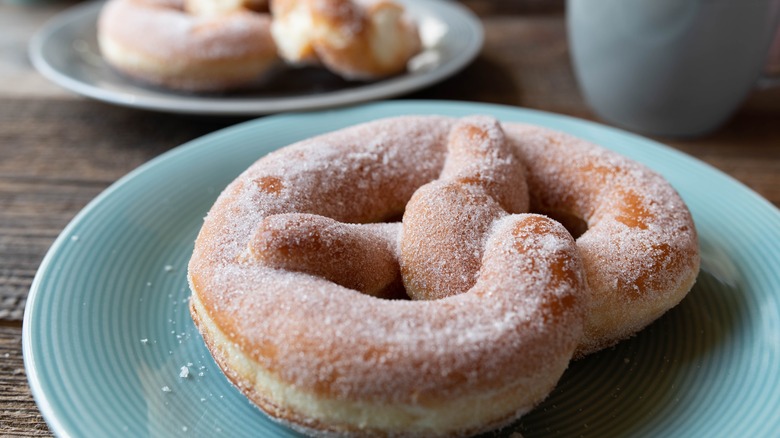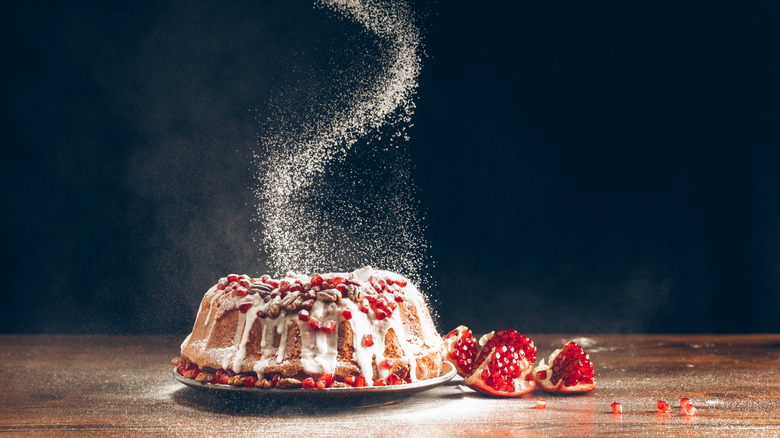What To Consider When Swapping Sanding Sugar With Coarse
Granulated white sugar works just fine for sweetening a dough or batter. But let's say you're making a funnel cake and it's time to decorate the finished article with a smattering of sugar on top. If you use granulated sugar to finish it, you may notice it's not as crunchy as the desserts you can get at bakeries. The reason is simple: Bakeries use finishing sugars to top their goodies.
Finishing sugars, with their large and crunchy crystals, are purpose-made for garnishing. Two popular kinds are sanding sugar (also known as "sparkling sugar" thanks to the sparkly, glitter-like shine that they have) and coarse sugar, which can also be sold as "decorating sugar" or "pearl sugar" due to its opaque, milky color. Unlike granulated sugar which only comes in white, finishing sugar can come in many different colors that you can choose to suit your recipe's vibe (classic white is available, too.) And texture-wise, they're crunchier and more pronounced thanks to the larger size of their granules.
While there are minor differences between them, the good news is that sanding and coarse sugars are totally interchangeable. You can hot-swap them in a recipe without adjusting anything. There's just one thing to keep in mind: Sparkling sugar may lose its shine when exposed to high heat, so it's best to sprinkle it on after baking if you want that sparkly effect. If the look isn't a concern, just use sanding sugar like you would with coarse.
Each type of sugar has its own quirks
It can be hard to tell, but there are a few differences between sanding and coarse sugar. Side by side, you'll notice coarse sugar granules to be much larger than sanding sugar. The larger size means they're crunchier. So, pâtissiers often reach for them when they need extra texture. Plus, coarse sugar can be added right on top of the dessert before it's baked, as it won't melt in the heat.
Sanding sugar, however, is prized for its appearance rather than its texture. When you put it under the light, each granule sparkles like glitter. This glittery effect is unique among sugar-kind and it's all thanks to the special way that sanding sugar is produced: Before it's packaged, the sugar is brushed with a layer of carnauba wax and then glazed. This waxy outer coating is very reflective, so whenever light is shone on it, the sugar granules sparkle a little. This sparkly coating is the reason why, despite sanding sugar technically being as melt-resistant as its coarse cousin, it's often reserved for the finishing touch after baking because heat causes the coating to lose its sparkle.
Whenever you need to swap between sanding and coarse sugar, keep these quirks in mind. How nice your sugar-topped dessert will look once it's finished baking will depend on it.

